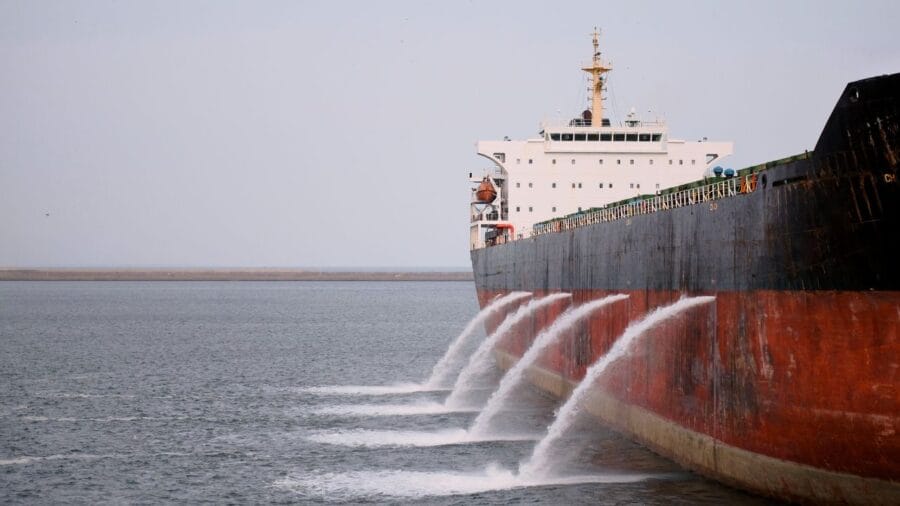Introduction
Lead ballast represents one of the most critical components in marine vessel design and operation, serving as the foundation for vessel stability and performance. With its exceptional density of 11.34 g/cm³, lead has established itself as the premier ballasting material in the maritime industry. This comprehensive guide explores the technical aspects, installation considerations, and regulatory requirements surrounding lead ballast in commercial vessels.

Understanding Lead Ballast Systems
Lead ballast fundamentally transforms a vessel’s performance by lowering its center of gravity and enhancing stability. The material’s high density allows for optimal weight distribution while minimizing space requirements, making it particularly valuable in commercial applications where space efficiency directly impacts profitability. Modern lead ballast systems typically achieve a 40-60% improvement in stability compared to vessels without proper ballasting, translating to enhanced safety and operational efficiency.
When selecting lead ballast configurations, engineers must consider the vessel’s intended purpose, operating conditions, and structural design. The calculation for required ballast involves several key factors, expressed through the formula: Required Ballast Weight = (Desired Draft – Current Draft) × Pounds Per Inch Immersion. This calculation serves as the starting point for developing a comprehensive ballasting strategy.

Types and Applications
Marine lead ballast comes in three primary forms, each serving specific purposes in vessel design and operation. Solid lead ingots, the most traditional form, provide maximum weight concentration in designated areas such as keel pockets and bilge spaces. These ingots, typically cast to precise specifications, offer a density-to-volume ratio that remains unmatched by alternative materials.
Lead shot ballast offers unique advantages in situations requiring flexible weight distribution. Comprising 99.9% pure lead spheres, this form allows for precise trimming and can conform to irregular spaces within the vessel. Engineers often specify lead shot for fine-tuning vessel trim or addressing specific stability requirements that emerge during operation.
Formed lead ballast represents the cutting edge of marine ballasting technology. Custom-manufactured to exact specifications, these pieces integrate seamlessly with modern vessel designs. The manufacturing process involves precision casting and quality control measures that ensure dimensional accuracy to within ±0.5mm, crucial for optimal installation and performance.
Installation and Technical Requirements
The installation of lead ballast demands meticulous attention to detail and adherence to stringent technical specifications. Proper mounting systems must account for the immense forces involved while preventing galvanic corrosion between dissimilar metals. Engineers typically specify Grade 8 fasteners with a minimum diameter of 3/8 inch, spaced no more than 12 inches apart to ensure secure mounting.
Structural reinforcement plays a crucial role in successful ballast installation. Load-bearing surfaces must be capable of supporting not just the static weight of the ballast but also the dynamic loads encountered during vessel operation. This often requires the installation of backing plates with a minimum thickness of 1/4 inch, properly sealed and protected against corrosion.
Maintenance and Inspection Protocols
Effective maintenance of lead ballast systems requires a comprehensive approach that combines regular inspection with preventive measures. Monthly visual inspections should focus on identifying early signs of corrosion or mounting system deterioration. These inspections must pay particular attention to areas where water might accumulate, as these locations present the highest risk for long-term damage.
Annual comprehensive inspections should include a detailed examination of all mounting hardware, structural supports, and the ballast material itself. These inspections must verify that all components maintain their original specifications and that no degradation has occurred that might compromise system integrity. Documentation of these inspections becomes particularly important during Coast Guard reviews.
Coast Guard Compliance and Documentation
The United States Coast Guard maintains strict oversight of ballast systems through a comprehensive regulatory framework. Vessel operators must maintain detailed records of their ballast systems, including initial installation documentation, modification histories, and ongoing maintenance logs. These records form a crucial part of the vessel’s stability documentation and directly impact compliance status.
During inspections, Coast Guard officers focus on several key areas related to lead ballast. They examine mounting security, structural integrity, and signs of corrosion or deterioration. The inspection process also includes verification of weight certificates and comparison of actual installations against approved plans. Maintaining organized, accessible documentation significantly streamlines these inspections and helps ensure compliance.
Environmental Considerations and Future Trends
While lead ballast offers superior performance characteristics, its use requires careful attention to environmental protection measures. Modern installation practices incorporate sophisticated containment systems and protective coatings to prevent any potential environmental impact. Proper disposal of lead ballast at the end of its service life must follow strict EPA guidelines and often requires specialized handling procedures.
The maritime industry continues to evolve, with new technologies and materials emerging regularly. However, lead ballast maintains its position as the standard for vessel stability due to its unmatched combination of density, cost-effectiveness, and proven performance. Understanding and implementing proper installation, maintenance, and compliance measures ensures that lead ballast systems continue to serve as the foundation for safe and efficient marine operations.
Conclusion
Lead ballast remains an indispensable component in marine vessel design and operation. Its proper selection, installation, and maintenance directly impact vessel safety, performance, and regulatory compliance. By following the technical specifications and maintenance protocols outlined in this guide, vessel operators can ensure optimal performance while maintaining full compliance with Coast Guard requirements. As the maritime industry continues to advance, the fundamental principles of lead ballast systems will continue to play a crucial role in vessel stability and safety.